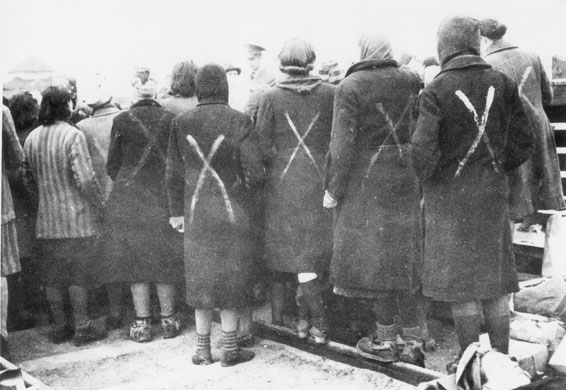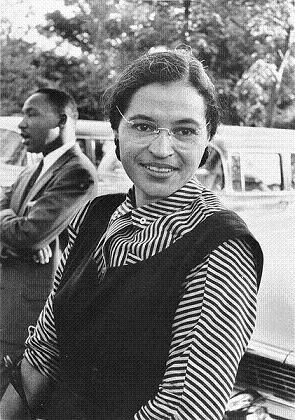
LIFE AS MYTH
![]()
JOURNAL
![]()
JOURNAL 2013
A living myth
Seven year cycles
![]()
SUMMER 2013
Love as myth
![]()
LIFEWORKS
![]()
ATLAS
![]()

SUMMER 2013
A SINGLE GARMENT OF DESTINY
The image above dates from the 1940's and documents women prisoners at Ravensbrück, a World War II concentration camp north of Berlin. During the war over 130,000 women were held at the camp. The largest ethnic group was Polish. Prisoners were subjected to forced labor and nonconsensual medical testing. There are reports of resistance which included secret educational programs led by experienced prisoner-teachers and the creation of personal artifacts like jewelry, small dolls and books. There is a major collection of surviving works on exhibition at Lund University Library, Sweden ("Voices from Ravensbrück"). Conditions in the camp, acceptable at the commencement of the camp's operation, deteriorated and by the end of the war there were only 15,000 survivors. Prison personnel, recognizing the end of the war and liberation, forced most of the prison population into a death march, hoping to kill witnesses who could testify to the camp's activites.
Injustice anywhere is a threat to justice everywhere. We are caught in an inescapable network of mutuality, tied to a single garment of destiny. Whatever affects one directly, affects all indirectly.
Dr. Martin Luther King [1929-68], clergyman and civil rights activistIn July 1961, Adolph Eichmann was on trial for Nazi war crimes. During the same time period, Stanley Milgram, a psychologist at Yale University, was conducting an experiment in social psychology which attempted to address the questions about human nature that the atrocities of the Nazi regime posed. His experiment measured the willingness of participants to inflict pain on another human being in order to obey an authority figure.
The experiment worked in the following way. When volunteers arrived at the test center, the testing officials alternately assigned the volunteers the roles of "Teacher" or "Learner." The Learner sat strapped in a chair in one room while the Teacher sat with the testing official in another. The Teacher tested the Learner on correct responses to word pairs. For each incorrect answer, the Teacher administered an electrical shock to the Learner. Each time an incorrect answer was given the shock intensity increased an additional 15 volts, up to a maximum of 450 volts. Throughout the experiment, the volunteer Teacher was unaware that the Learner was, in fact, an actor or student participant who was never actually harmed.
Dr. Martin Luther King [1929-68], clergyman and civil rights activist, pictured in the background with Rosa Parks [1955]
. . . Stark authority was pitted against the subjects' [participants'] strongest moral imperatives against hurting others, and, with the subjects' [participants'] ears ringing with the screams of the victims, authority won more often than not. (Stanley Milgram, 1974)
Variations on the test yielded different results. For example, Milgram found that Teachers were more willing to administer the shocks, if the Learner was in another room and the source of authority (test supervisor) was close at hand. If Learners sat in the same room as the Teachers, however, Teachers became noncompliant and refused to continue the experiment. What is cruelty? Simply put, cruelty is to act without regard to the pain caused to another, to even take pleasure in the pain caused. Is humanity distinguished from the rest of creation by its capacity for cruelty? Or are we actually no different from the natural source from which we spring? To observe Nature is to experience a cosmic opera of both beauty and brutality. In Pilgrim at Tinker Creek, Annie Dillard observes the inherent savagery in the cycle of life and then writes: Cruelty is a mystery, and the waste of pain. In other words, suffering and brutality are part of the natural order. Cruelty, however, is unique to Humankind.
Do we all have the potential for cruelty? The Milgram experiment seems to say yes. It also seems to reveal certain circumstances that make cruelty more or less likely. Distance from the victims is one factor and release from personal responsibility (obedience to authority) is another. With proximity to human suffering, and by assuming individual responsibility for how our actions contribute to that suffering, we will lessen the likelihood of cruelty and the wasted pain it creates.


